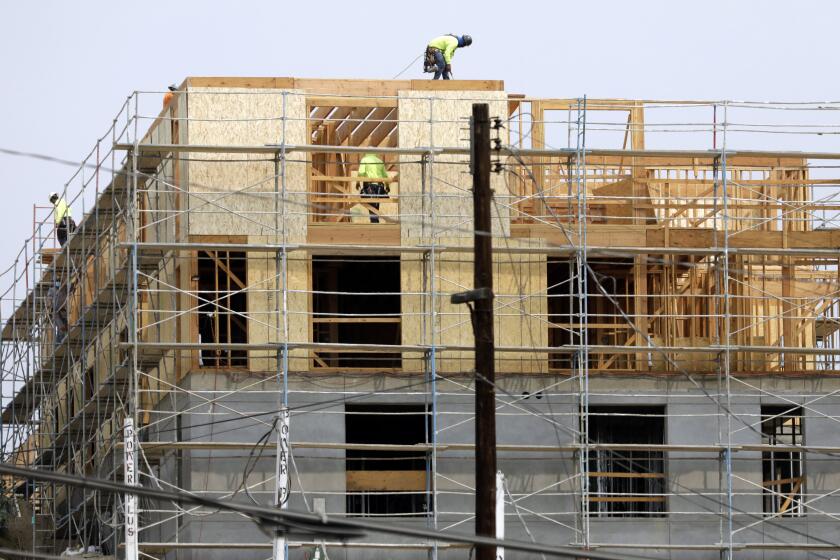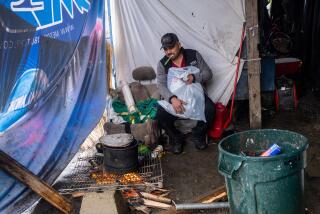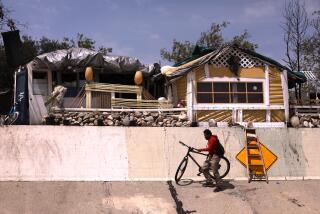$130,000 for an 8-foot-by-8-foot shed? That’s what L.A. is paying in a bid to house the homeless
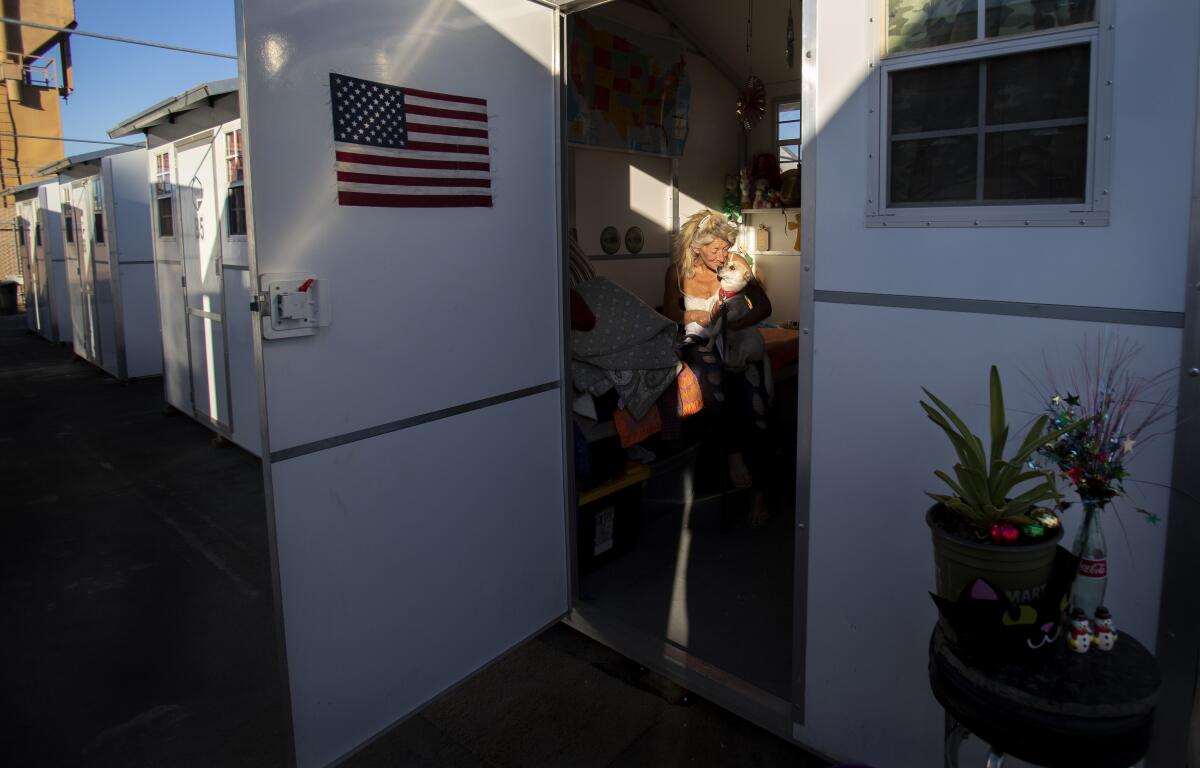
In other cities, 64-square-foot aluminum and composite sheds are being used as quick and inexpensive emergency shelter for homeless people.
Not in Los Angeles. Here, plans to employ the minimalist structures, known as “tiny homes,” have blossomed into expensive development projects with access roads, underground utilities and concrete foundations — and commensurate planning delays.
At the city’s first tiny home village, scheduled to open in January, each of the 39 closet-sized homes is costing $130,000, about 10 times what some other cities are spending. Five more villages are planned to open later.
Mayor Eric Garcetti announced the program in March, signaling that the concept of sheltering people in tiny homes, long neglected in Los Angeles, had emerged as a leading strategy in the city’s response to a federal lawsuit alleging it has done too little to get homeless people off the streets.
He told the court that the city had purchased 50 of the prefab structures as the first installment of a plan to shelter homeless people in villages of tiny homes around the city.
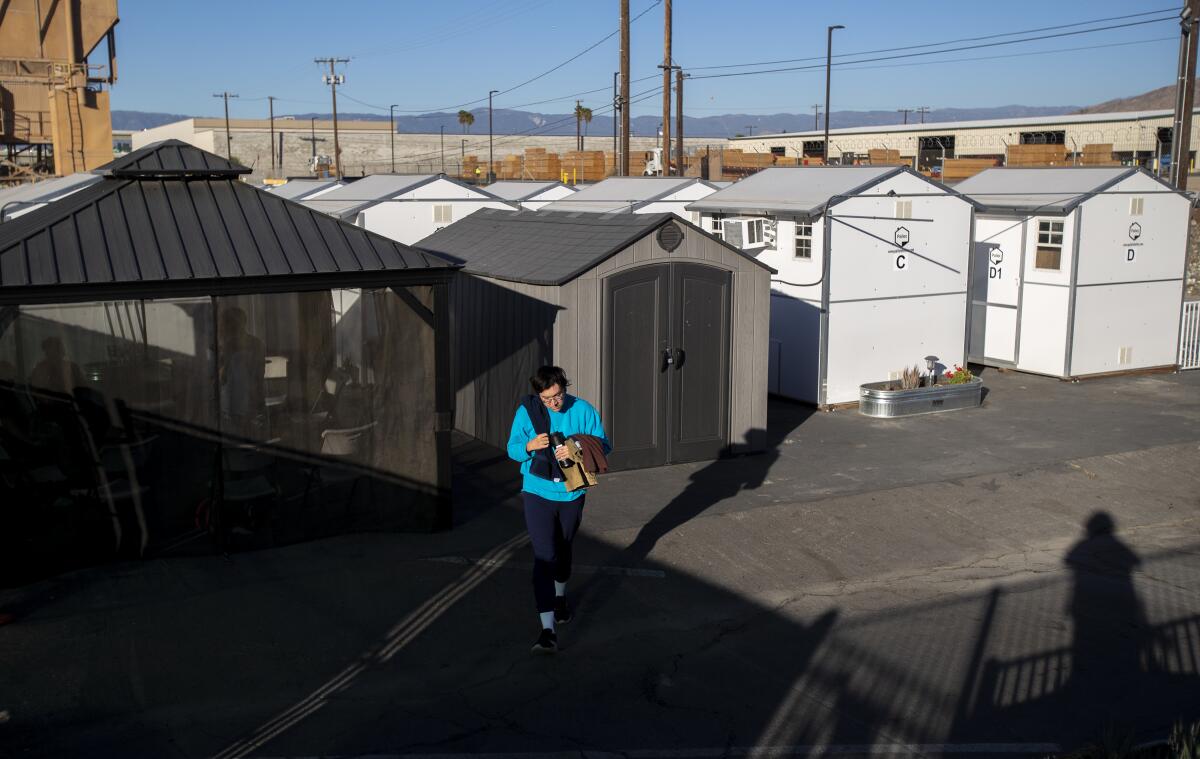
The 50 mini-shelters, delivered in May, have remained in storage in the port of San Pedro as officials pored over the design and put the project out to bid. Total cost: $5.2 million.
The other tiny home projects, all scheduled to open in April, are projected to cost less, but on average the city is expecting to spend at least $82,000 per shelter if bids come in on budget, city records show. The initial contract attracted only one bid, which came in about $430,000 over estimate.
The average cost of projects funded by a $1.2-billion bond program have risen from $350,000 to $531,000.
The cabins the city purchased are about the size of a jail cell, or of a medium-sized backyard shed that can be purchased for a few hundred dollars. Constructed of an aluminum frame with composite sheets for walls, they measure 8 feet, 6 inches by 7 feet, 6 inches — technically 63.75 square feet — and will have two retractable bunks each. Food will be brought in and handed out at an eating area. Showers and restrooms will be in separate trailers piped to the sewer.
For the duration of COVID-19 protocols they will be restricted to a single occupant. However, the city is counting both beds in its tally to satisfy its commitment to U.S. District Judge David O. Carter to provide about 6,100 new shelter beds.
The tiny home program is facing criticism from participants in the lawsuit both for its cost and the skimpy quarters.
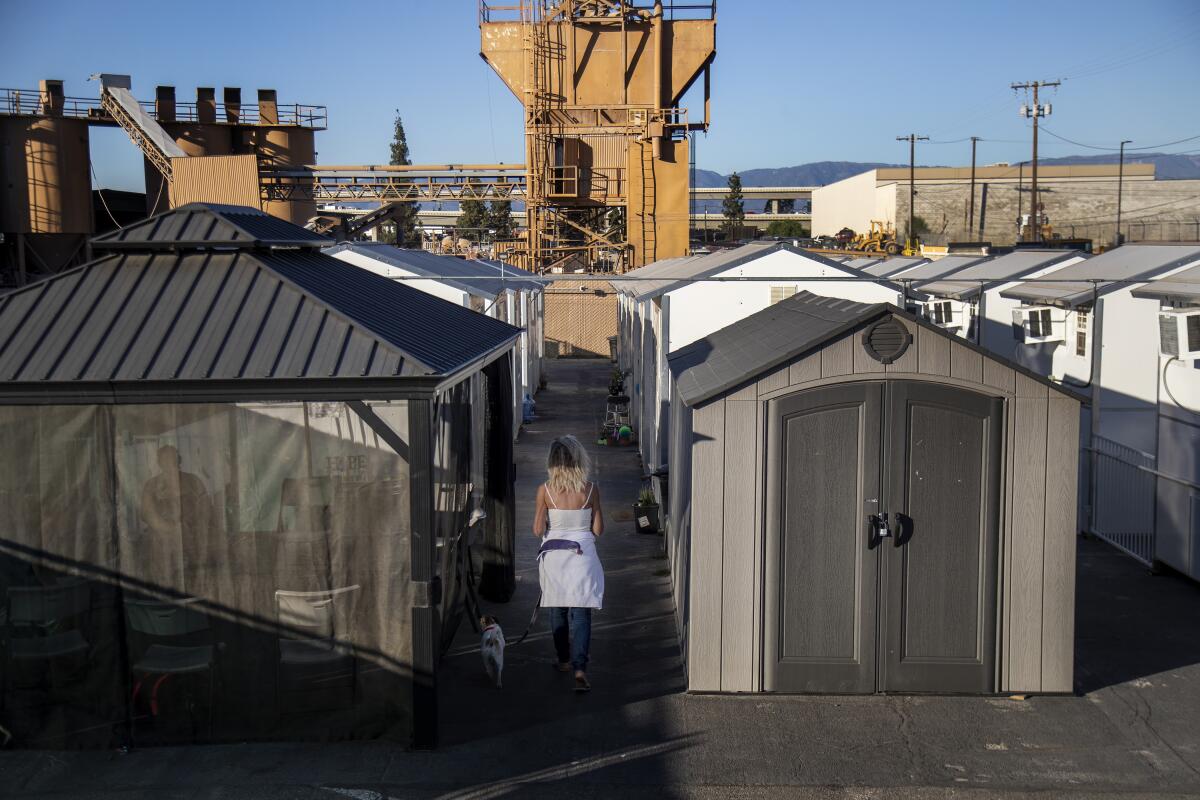
“It seems unimaginable to me that two adults with their own lives can share that space reasonably,” said Shayla Myers, an attorney for the Legal Aid Foundation of Los Angeles, which is intervening in the lawsuit on behalf of homeless people.
For the parties who brought the case, a coalition of business owners and residents, cost is the bigger problem.
“It’s such an example of why we’re in this mess in Los Angeles,” said Elizabeth A. Mitchell, an attorney representing the group, the LA Alliance for Human Rights. “They do these massive projects that are so cost prohibitive, and they only provide beds for a few people while others are degrading in the streets.”
Los Angeles officials contend that the cost calculation is unfair. In a filing with the court, City Atty. Mike Feuer argued that the actual cost is only $4,193 per person — one-tenth of the initial outlay — because the shelters are designed to last at least five years, and two people will occupy each cabin in a year before moving on to permanent housing — a goal of bridge housing that has proved overly optimistic in practice.

Feuer said the city did everything it could to reduce the cost, “but not at the expense of safety and hygiene, or of greater overall costs.” The city has relaxed building code requirements for storm water runoff and parking, reduced the required ratio of bathrooms to bedrooms, and allowed tighter spacing of the structures, he said.
The city also shortened the development time by purchasing the structures without competitive bidding from a Washington state company called Pallet, which has supplied personal shelters equipped with heat and air conditioning to several other California cities.
Yet at about $8,600 each, the price tag for the individual shelters accounted for only a small fraction of the overall cost.
A breakdown provided by the Los Angeles Bureau of Engineering shows that the contract provides $1.5 million just to prepare the site.
It also includes $122,000 for underground utilities, $253,000 for concrete pads (one for each shelter), $312,000 for an administrative office and staff restroom, $1.1 million for mechanical, electrical and fire alarms and $280,000 for permits and fees.
Additionally, the city has budgeted $651,000 to connect to the street sewer line and $546,000 in design, project management and inspection costs.
Mayor Eric Garcetti asked, and the answer was yes.
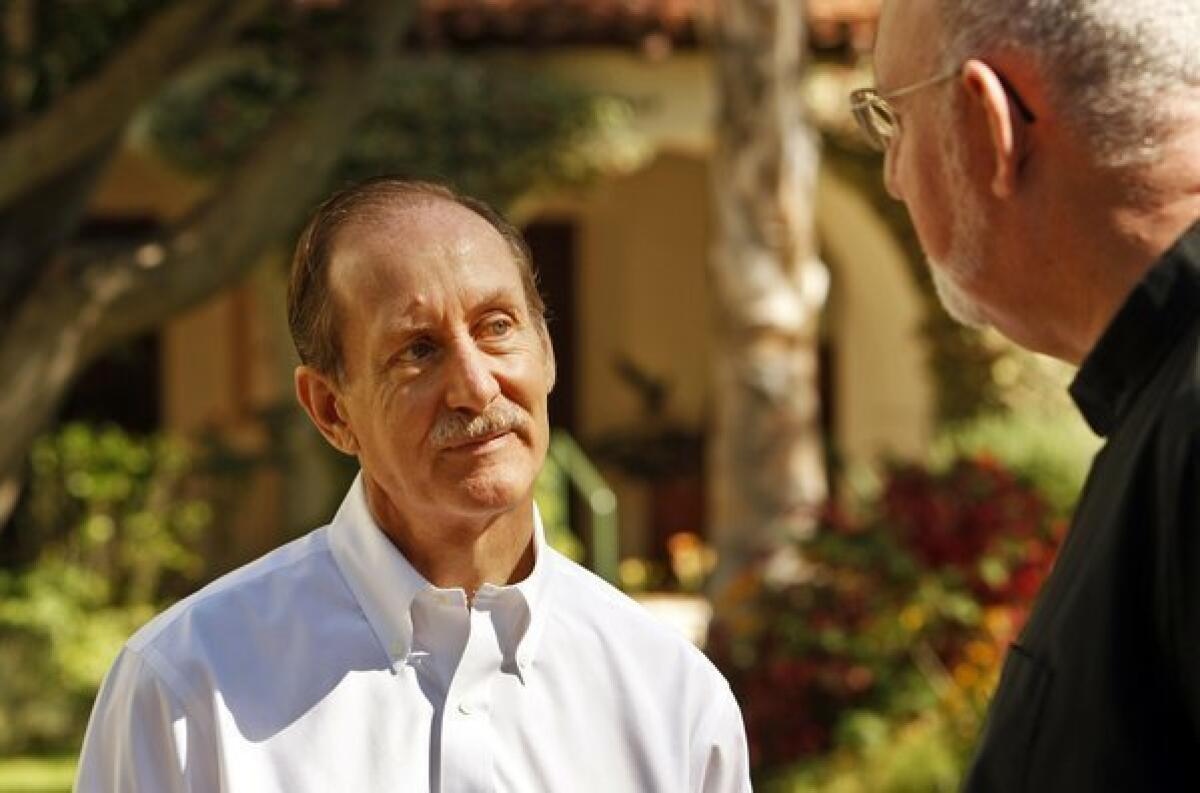
Former Ventura and Santa Monica City Manager Rick Cole, who served two years as Garcetti’s deputy mayor for budget and innovation, said the city faced a paradox of “nice to haves” vs. “need to haves.”
“There is no ‘waste’ here, just a good and modest idea done the way the Pentagon would do it,” Cole said in an email after reviewing an itemization of the costs for the Chandler tiny home project in North Hollywood. The Pentagon, of course, is infamous for expensive overengineering.
Noting that site preparation includes demolition, clearing, grading, paving, walkways, landscaping, K-rails, fencing, security guard booth and design fees, he said the city could “cut it in half and you’d have a noticeably less nice, but still serviceable development.
“Someone has to make a decision on the trade-offs of whether you are going to have safe and decent housing with these features all built in for a few people or a stripped-down version for more people,” he said.
Others that have purchased shelters from the Washington company got their tiny home villages up and running more quickly and at far less cost by stripping the plans to the minimum.
On Jan.14, the Sonoma County Board of Supervisors decided to set up a temporary shelter for a group of homeless people camped beside a county trail.
“Pallet shelters are so easy to construct, to get on site,” said Caroline Judy, director of general services. “Pallet was a great partner. They brought out a team, many who had experienced homelessness, worked really well with our team. We created a village in 11 days.”
The cost was $21,817 per cabin, Judy said.
Alarmed by a death on the city’s mini skid row, Riverside Mayor Rusty Bailey bought one shelter from Pallet, set it up in the parking lot next to the city’s homeless shelter and moved in.
“I stayed in it until there was consensus and political will to create a larger village of these Pallet shelters in the same parking lot,” he said.
“It was an adventure,” he said. “It obviously informed my thinking.”
He found the space livable, providing a “sense of ownership and security” that doesn’t exist in congregate shelters and would be sacrificed with both bunks in use.
The City Council voted last Dec. 17 to purchase 30 shelters. The village opened March 13, at a total cost of $512,000 — just over $17,000 per shelter.
The structures were placed directly on the asphalt, leveled on wood blocks and secured with screws and brackets fashioned by city workers. Electricity is supplied by overhead conduit. Bathrooms and showers are in trailers. Staff offices and a dining area are in a double-wide trailer.
Except for couples, the two-bed units have only one occupant each and will stay that way even without COVID-19 restrictions.
Bailey said a sense of ownership and security contributes to the mental stability homeless people need to move forward.
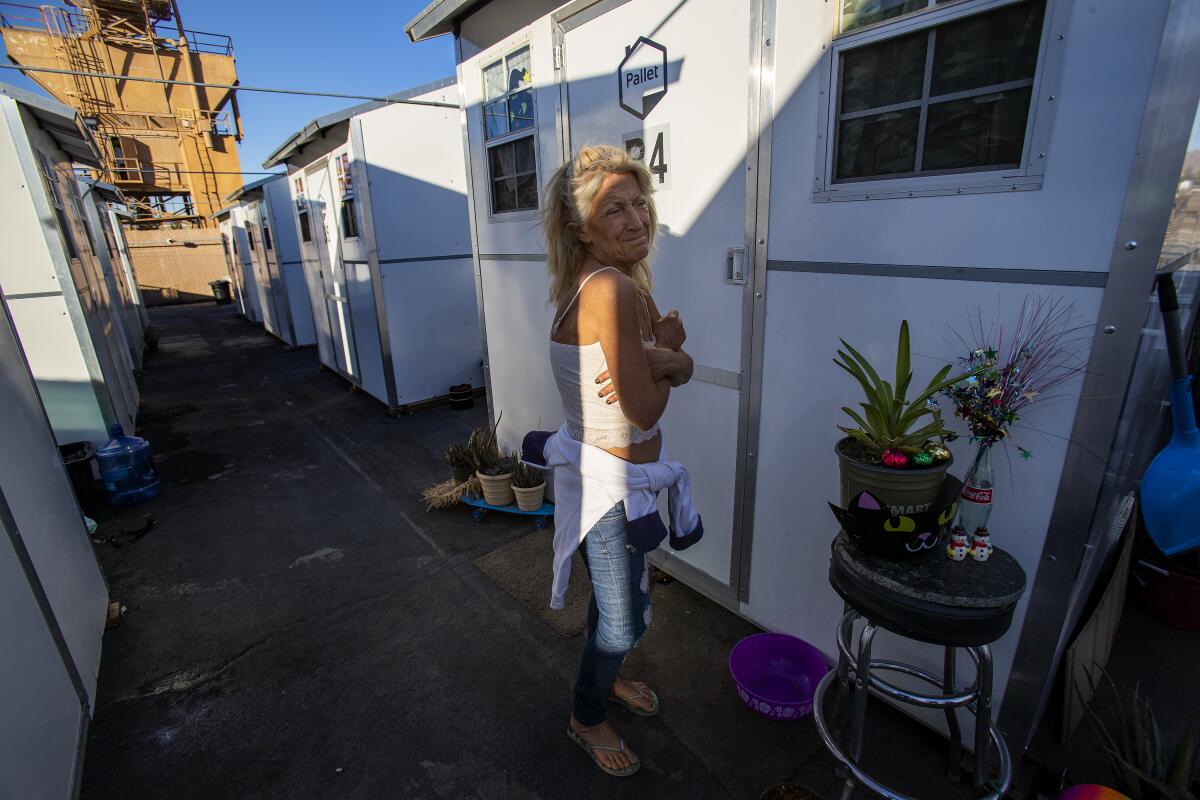
Karen Morea, a 52-year-old hairdresser, shares her shelter with her dog, Jack-Jack. She uses the extra bunk as a platform for the stuffed animals and mementos that adorn her home.
She said she ended up in Riverside after becoming homeless in Lake Havasu and being stranded in Norco by someone she took a ride with. Sheriff’s deputies took her to Riverside, where she ended up on Massachusetts Avenue near the shelter, she said.
She tried the shelter but didn’t adapt to being closed in with other people.
“I’m way claustrophobic,” she said. But she said she could stay in the Pallet shelter.
“Yeah, if they’ll have me. It’s wonderful.”
Her neighbor, Carlos Beltran, 35, keeps more spartan quarters with the second bunk latched up and only a few cleaning supplies on the floor.
He said he is working his way back to God after bad decisions left him with nothing but a broken-down car. He now has a job and a working car and is hoping to get established with a religious community.
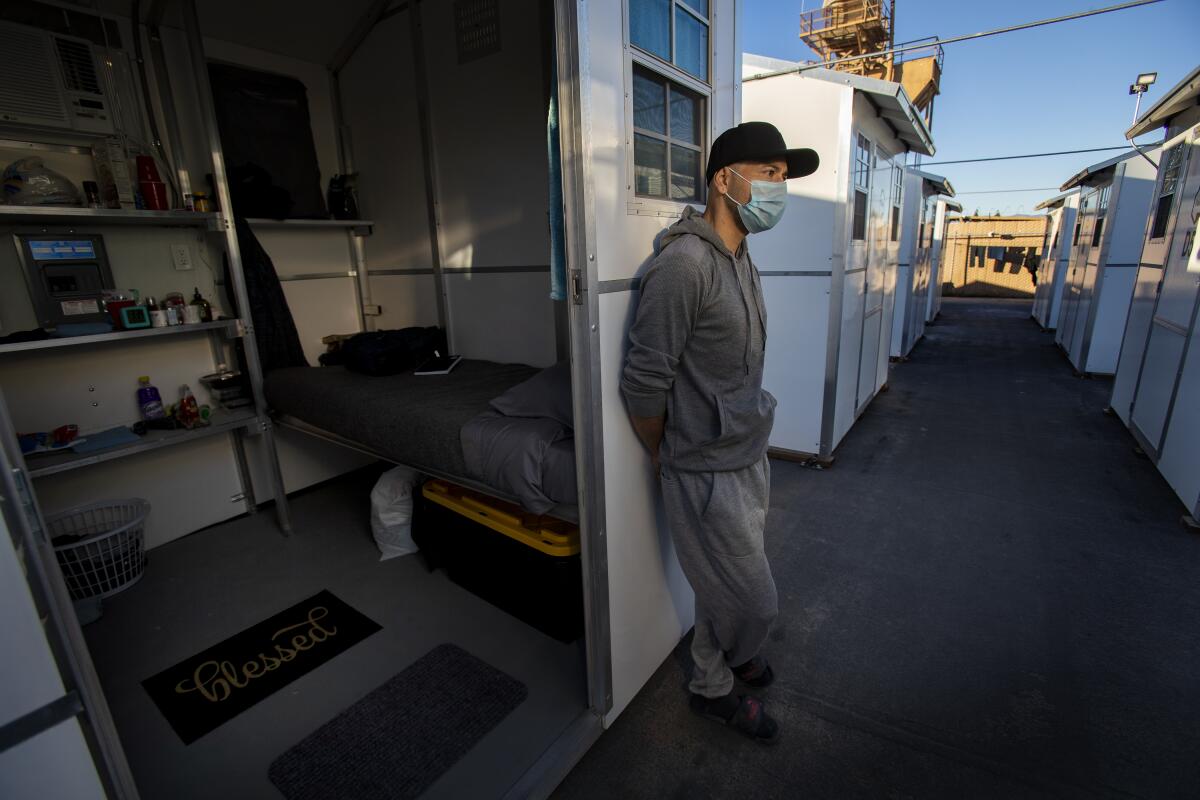
“I just needed a little help,” he said.
Riverside is typical of other government agencies using the Pallet shelters. They are installed quickly, at low cost, and are being used as singles, even if they have multiple beds.
For what it calls its Stability Site, the city of Tacoma, Wash., purchased 58 shelters with two bunk beds each for four occupants. But it’s only using one. The city spent $700,000 to set it up, which works out to about $12,000 per shelter, less than one-tenth the cost of L.A.’s tiny homes.
“One of the appeals to the Pallet shelter is for someone to have their own space,” said Erica Azcueta, program manager for homelessness and household stability. “When we set up the Stability Site, some individuals had been homeless for a long time, over a decade. Providing that single space for them really improves the likelihood of having them ready for permanent housing.”
In Santa Cruz, the nonprofit Housing Matters set up 10 shelters in a day in the parking lot of its two-acre campus that includes a family shelter and transitional housing, along with a dining hall and restrooms.
“They delivered,” said Tom Stagg, director of the program. “We stayed out of the way. They got them set up.”
The two-bed option is not being used, either.
“There are individuals in the community who have resisted interim shelter,” Stagg said. “When they heard we had this option, half asked, ‘How do I get in there?’ There’s a lot of advantages we want to keep.”
Pioneered in Seattle several years ago, the idea of replacing homeless camps with villages of miniature shelters began as a nonprofit enterprise with citizen participation.
Sharon Lee, executive director of the Low Income Housing Institute, said she wanted to leverage Seattle’s law legalizing tent camping on public land. Based on city code allowing structures of 120 square feet or less without permits, her organization provides designs and materials costing about $2,700 each to churches and volunteer groups whose members build the houses.
Combining public and private funds, the nonprofit now manages 550 tiny homes in villages on public property, private property and church property around the Seattle area. It costs from $300,000 to $500,000 to set up 40 or 50 homes, depending on the sewer connection, Lee said. Portable toilets initially used have been replaced by permanent bathrooms and showers.
The villages function as communities, with residents all performing chores and, at some, taking part in self-governance.
Seattle’s citizen-driven model never got traction in Los Angeles.
When a self-styled homeless activist started delivering hand-made tiny homes to people living on the streets, the city ruled the structures illegal and quickly stamped out the movement.
More to Read
Sign up for Essential California
The most important California stories and recommendations in your inbox every morning.
You may occasionally receive promotional content from the Los Angeles Times.
